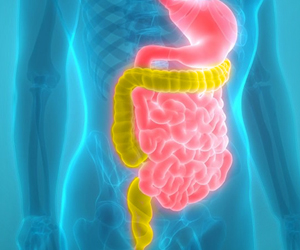
‘Consumption of fast food increases exposure to phthalates, which causes fibroids and endometriosis in women, and reduced IQ and behavioral problems in children.’
Tweet it Now
Researchers studied the relationship between fast food consumption and the level of phthalates in their urine. The data were collected by the Centers for Disease Control and Prevention between 2003 and 2010 as part of nationwide surveys on health and nutrition that included more than 8,877 children and adults.Nearly one-third of the study participants said that they had eaten fast food in the last 24 hours. For those who consumed more fast food, meaning at least 35% of their calories came from fast food, had 23.8% and 39% higher levels of two phthalates called DEHP and DiNP, respectively, compared with participants who did not report having any fast food on the last day.
Moderate consumers of fast food - people who ate fast food but consumed less than 35% of their calories- had 15.5% and 24.8% increases in DEHP and DiNP in their urine.
"There are increasing recommendations from scientific and clinical bodies suggesting the general population and vulnerable populations like pregnant women reduce their exposure to phthalates, but up to now there have been very few sources that people can have control of," said Ami R. Zota, assistant professor of environmental and occupational health at the George Washington University Milken Institute School of Public Health. Zota is the lead author of the study, which was published in the journal Environmental Health Perspectives.
High levels of exposure to phthalates could lead to adverse reproductive outcomes in women, according to a report released by the American College of Obstetricians and Gynecologists released a report in 2013.
Advertisement
People are exposed to phthalates in several ways. They are found in soaps, perfumes, nail polish, medications, and we can ingest, inhale and absorb them through the skin.
Advertisement
"This study shows that fast food may be an especially important source of phthalate exposure," said Linda Birnbaum, director of the National Institute of Environmental Health Sciences and the National Toxicology Program. "In fast food, it's even more handling and more packaging" than food you might buy at the grocery store, she added. For example, just about everyone handling ingredients at a fast food joint is supposed to wear gloves, which contain phthalates that can be transferred to food.
More studies will need to be done to see which menu items specifically lead to spikes in phthalates, said Birnbaum.
The new study found that cereal-based items and fast foods containing meat were linked with greater increases in phthalate levels. This could be due to the processing and packaging of foods or fats in the foods that bind phthalates better.
“So far there is the most evidence incriminating DEHP and its effect on health, including brain development, behavior, and respiratory health, but studies are starting to suggest that DiNP could have similar effects,” said Zota.
"There has been a wealth of additional scientific evidence suggesting adverse health effects of [DEHP and DiNP] at low levels. Many of the studies that have found a link between phthalate exposure and reproductive and developmental problems involved populations that had similarly low levels of exposure as in the CDC sample,” she added.
Source-Medindia














